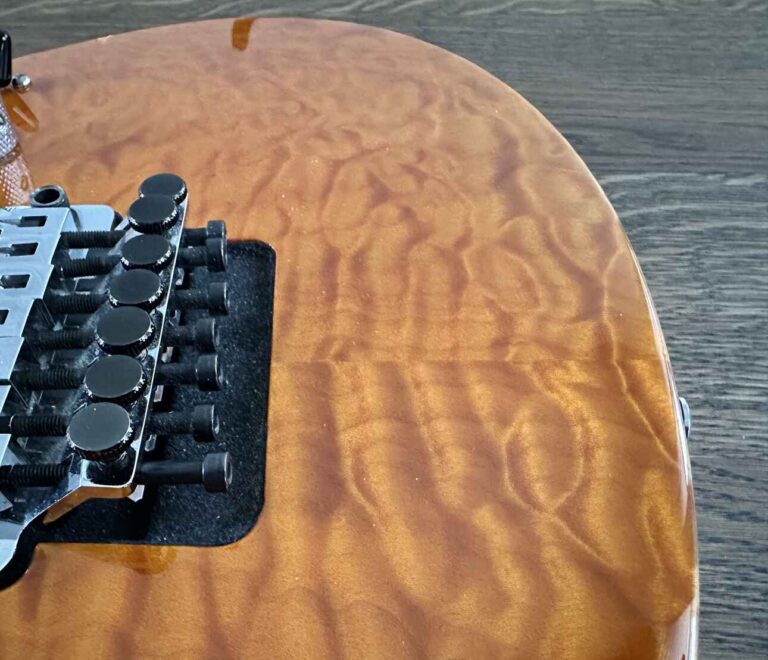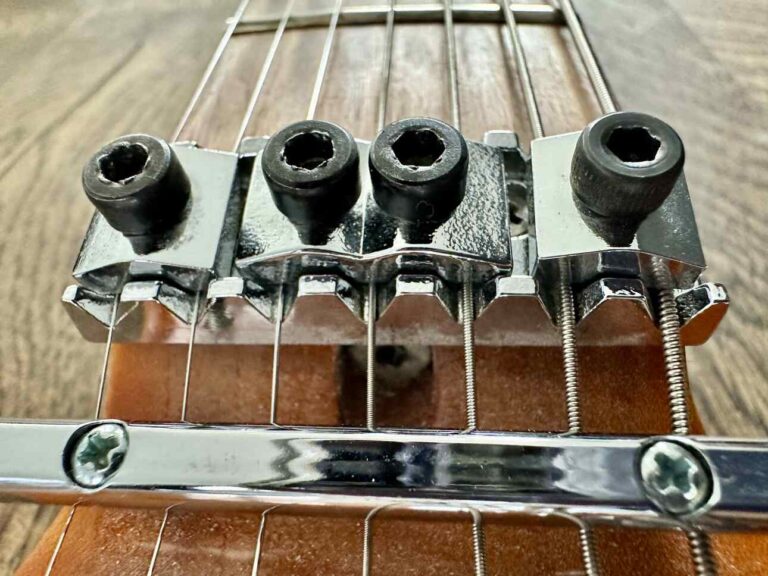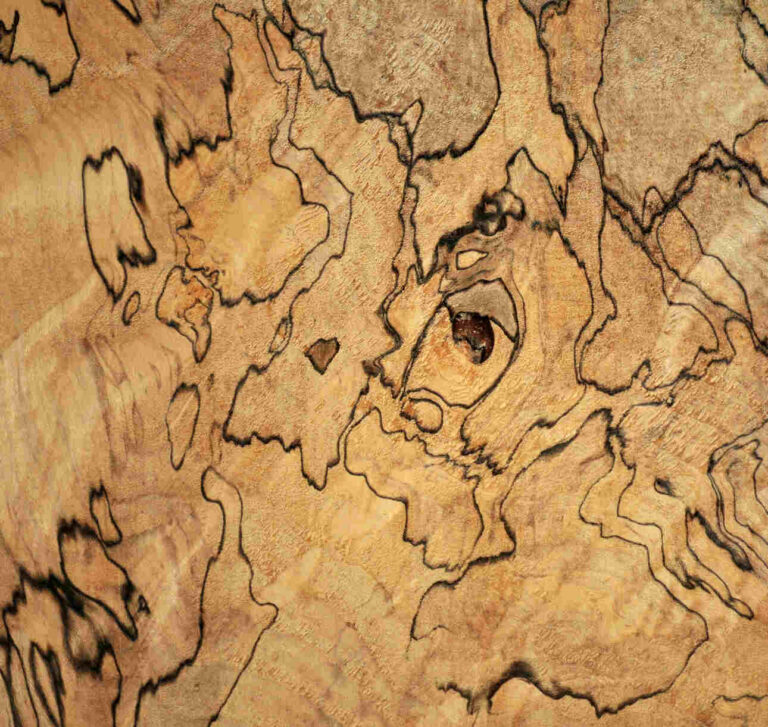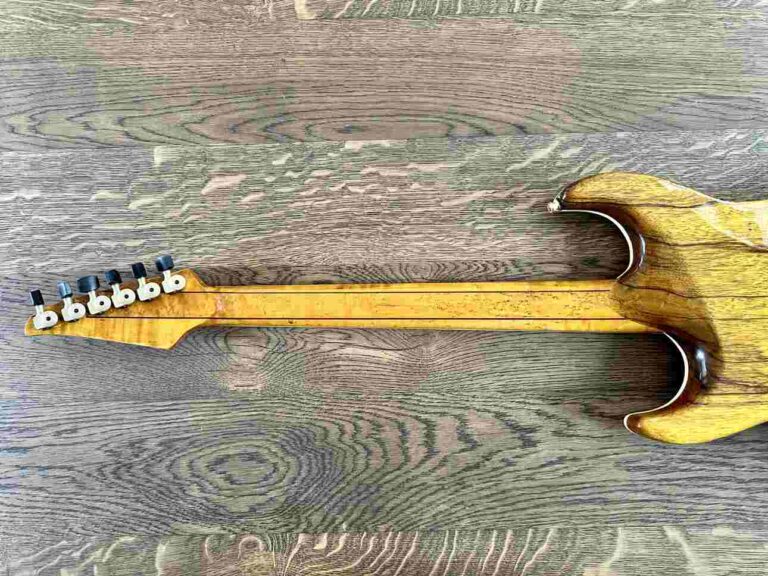Does Wood Grain in Electric Guitar Tonewoods Affect Tone?
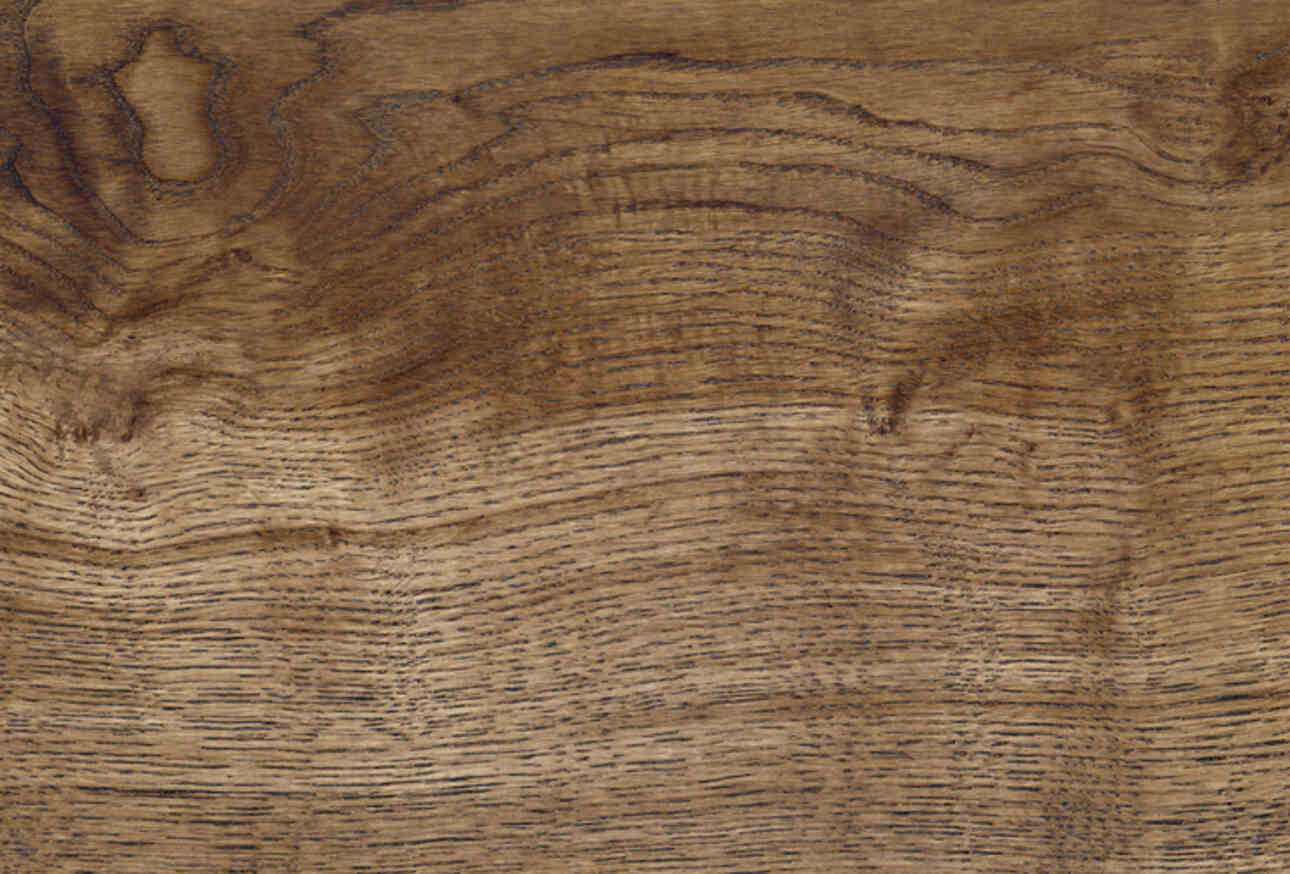
Yes, the wood grain in electric guitarwoods can affect your guitar’s tone. Different woods’ grain patterns, densities, and cellular structures impact your guitar body’s resonance and sustain. But, the extent to which it does so is debated among musicians and luthiers.
One of the most passionate debates in the guitar world is the effect of wood grain on guitar tone. They play a vital role in determining your guitar’s sound and character.
But does wood grain affect the tone of an electric guitar?
I can’t give you a definitive answer. I just wanted to give you a heads-up on the ongoing debate on this topic.
Below is the theory on the subject. I suggest you read it, test some guitars made of different wood types, then pick a side in the debate 🙂
Key Takeaways
- Wood grain can influence the tone of electric guitars. Factors such as species and construction play a role;
- Grain direction and pattern impact the sound quality of different types of tonewoods;
- Choosing guitar tonewood based on grain characteristics can enhance your guitar’s tone and playability.
The Impact of Wood Grain on Guitar Tone
Understanding Wood Grain and Tone
When it comes to your electric guitar’s tone, the type of wood, or tone wood, plays a significant role. Wood grain, on the other hand, refers to the pattern formed by the arrangement of fibers in the wood.
These patterns can be tight or wide depending on the tree’s growth. The grain pattern affects the aesthetic appeal of your guitar and contributes to the tonal qualities.
The choice of tonewood decides the coloration and sustain of the instrument. Some examples of tonewoods are maple, mahogany, and rosewood. Each wood type has its unique characteristics that influence the sound.
Scientific Perspective on Grain and Sound
From a scientific perspective, the wood grain can affect your guitar’s tonal response. It influences the wood’s stiffness, density, and damping properties. As the fibers in the wood are more compressed, the wood becomes denser and stiffer. This results in a brighter, clearer tone.
Woods with wider and more loosely arranged fibers produce a warmer and fuller sound. But the wood grain’s effect on tone may be less significant than the wood species’ tonal properties. And, yes, this remains a subject of debate and preference among guitarists and luthiers.
Luthiers’ Take on Guitar Tonewoods Grain Patterns
Many luthiers believe the wood grain pattern is essential for the best tonal quality. They prefer features like quarter-sawn grain and rift-sawn grain. This is because they offer better stability and resonance than patterns like flat-sawn.
Here’s a brief comparison of these grain patterns:
Quarter-sawn grain:
- More vertical arrangement of fibers;
- Improved stiffness;
- Better sustain and resonance.
Rift-sawn grain:
- Like quarter-sawn but with slightly different angles;
- Comparable stiffness and tonal characteristics.
Flat-sawn grain:
- More horizontal arrangement of fibers;
- Less stiffness;
- Tends to produce a warmer, less defined tone.
Types of Tonewood and Their Grain Characteristics
Spruce and Its Grain Impact
Spruce is a popular choice for (acoustic) guitar tops. This is due to its strength-to-weight ratio and responsiveness to different playing styles. Its straight and even grain pattern contributes to a balanced tonal quality. This makes it an excellent choice for acoustic guitars. Though it’s pretty rare in electric guitars.
With spruce, pay attention to the grain spacing. The tighter the grain, the brighter and more responsive your guitar’s tone will be.
The effect of wood grain on guitar tone is
one of the most passionate debates in the guitar world
Mahogany’s Grain Influence on Tone
Mahogany is another common tonewood used in guitar construction. It’s loved for its warm sound and strong sustain. It has a more open and less uniform grain than spruce, which contributes to its tonal character.
Many blues and rock guitarists love the sound of mahogany. If this tonewood is the right choice for your guitar, look for a dense and uniform grain pattern. It will give you the best acoustic properties and tone.
Rosewood Grain and Acoustic Properties
Luthiers rave about Brazilian rosewood for its acoustic properties. This makes it a sought-after tonewood for fingerboards and (acoustic) guitar bodies. Its rich and complex grain pattern adds visual appeal.
But more importantly, it provides a warm, resonant tone with deep bass notes and sparkling overtones.
Maple Grain Influence on Tone
The grain of maple is usually straight. But it can also feature flame, quilt, spalted, and birdseye patterns. Maple’s density and hardness contribute to a bright, clear sound with good sustain.
The wood’s tight grain pattern can enhance the crispness and articulation of notes. This makes it a popular choice for good sounding guitar necks and fretboards.
Construction and Design: How Grain Direction Matters
Top Wood Grain Direction
The grain direction is crucial in determining the tone and sound quality of the topwood. Its material properties impact how the sound is transmitted through your guitar. You’ll want to choose a straight, even-grain top wood. It can help produce clear and balanced tones.
A top wood with a tight, consistent grain pattern will allow your guitar to resonate more efficiently. It enhances the clarity and sustain of each note.
However, the visual appeal of the wood grain shouldn’t be the primary deciding factor. Instead, I suggest you focus on the acoustic properties of the tonewood.
Back and Side Wood Grain Considerations
Like the top wood, the grain direction of the back and side wood (for acoustic guitars) also affects your guitar’s tone. Select the back and sides to complement the top and support the sound quality.
In contrast to the top wood, the grain direction for the back and side wood can be more varied.
But there are some standard patterns to consider:
- Parallel grain: The parallel grain pattern can provide a balanced, well-rounded sound with good projection and sustain across the grain.
- Cross-grain: This pattern may yield a more focused and precise tone. It emphasizes the higher and midrange frequencies.
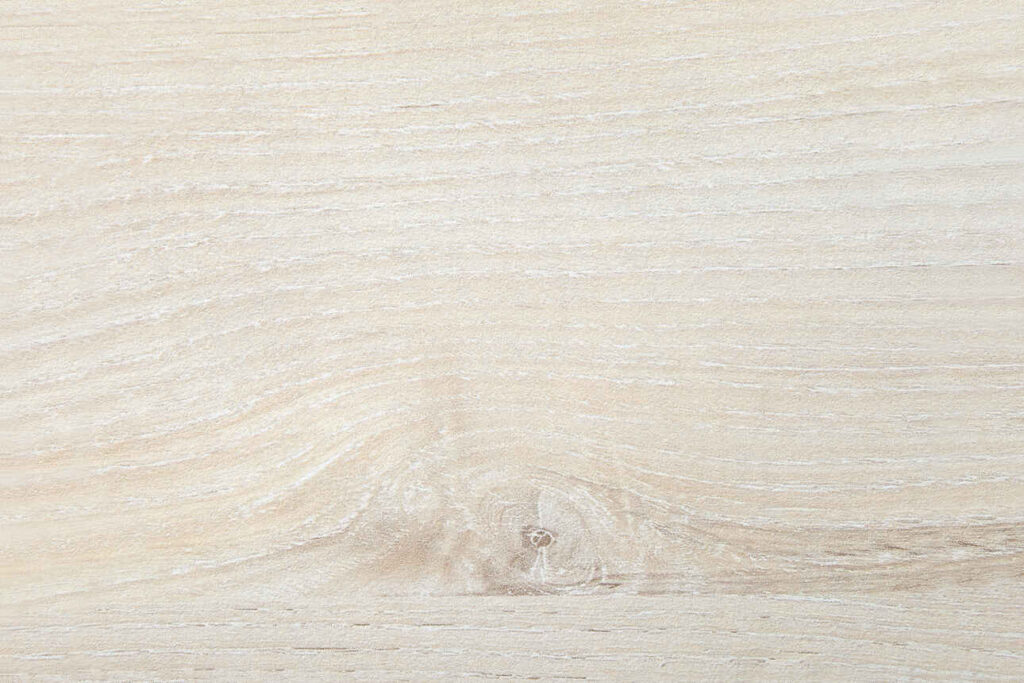
Choosing the Right Tonewood Based on Grain
Choosing tonewoods for your electric guitar is a matter of aesthetics and acoustics.
Aesthetics Versus Acoustics
A beautiful wood grain can make your guitar visually stunning. But don’t forget that the wood choice could affect the sound quality of your guitar.
Some popular tonewoods to consider:
- Mahogany: Delivers a warm, rich tone with durability
- Alder: Known for its balanced and resonant sound
- Ash: Offers a bright and cutting tone with a visually striking grain
- Maple: Provides a bright and clear sound, suitable for various genres
Wood Selection
About wood selection: Distinguish between wood with a regular grain pattern and wood with an irregular grain pattern. Regular grain patterns produce a more consistent and balanced tone than irregular grain patterns.
If you want to choose the right tonewood based on the grain pattern, ask your tonewood supplier or luthier for help. This will ensure that you make the right choice.
Advanced Topics in Tonewood Grain
The Effect of Grain on Sustain and Resonance
Grain, sustain and resonance are important in determining an electric guitar’s tone. The wood grain pattern can affect these characteristics. Generally, tightly spaced and consistent grain patterns are preferred. This is because they produce better sustain and resonance.
For instance, if you find a piece of wood with a straight grain, it can provide better sustain and resonance than a more uneven grain pattern. Different wood species also have unique properties that can further influence the tone.
Interlocked vs. Straight Grain: Comparing Tonal Outcomes
There are distinct differences between interlocked and straight grains in their effect on the tone of an electric guitar:
- Interlocked Grain: This grain pattern has fibers that weave and twist together. It creates a more complex structure. While this can be visually attractive, interlocked grain can yield lower sound speed. It might affect your tonewood’s tonal capabilities;
- Straight Grain: A straight grain pattern has fibers that run parallel. This less-complex structure allows the wood to vibrate more efficiently. Which results in better sustain and resonance.
Straight-grained wood produces a more consistent and desirable tone than interlocked grain. However, know that the species and age are at least as important in selecting tonewoods.
The Influence of Aging on Tonewood Grain and Tone
As tonewood ages, its cellular structure becomes more stable. Besides, the resins within the wood harden. This can improve tonal qualities like sustain and resonance.
Also, tonewood’s structural changes can alter its grain pattern over time. Wood expands and contracts with changes in temperature and humidity. This can sometimes cause the grain to shift.
Frequently Asked Questions
How does the wood type influence the sound of an electric guitar?
The wood type can impact the sound of an electric guitar through its influence on resonance and sustain. Different species of wood, or tonewoods, have varying tonal characteristics. It affects how your guitar’s vibrations develop and how it produces sound.
What are the tonal characteristics of different woods used in electric guitar bodies?
Each wood species has unique tonal characteristics that can affect the sound of your electric guitar. Some common wood types used in guitar bodies include mahogany, alder, ash and maple. Mahogany produces a warm and rich tone. Alder and ash deliver a more balanced tone with slightly brighter highs. Maple is known for its bright and clear sound.
Can the wood of an electric guitar body affect its resonance and sustain?
The wood used in an electric guitar body can influence its resonance and sustain its resonance and sustain. Different types of wood have different characteristics. They affect how your guitar vibrates and decays. This, in turn, impacts the resonance and sustain.
Why is the choice of wood important when designing an electric guitar?
Your wood choice is crucial when designing an electric guitar. It can affect various aspects, such as tone, resonance, sustain, and the look and feel. The wood’s tonal qualities can significantly contribute to your guitar’s sound. It could impact the style of music that suits it.
Is there a significant difference between heavy and light woods in electric guitar tones?
There can be noticeable differences in tone between heavy and light woods. Generally, heavier woods like mahogany provide a warmer and fuller tone than lighter woods such as swamp ash. This offers a brighter and more responsive sound. Heavier woods also often produce increased sustain and resonance.
Does the type of wood used for the guitar neck and fretboard impact tone?
The effect might be subtler compared to the guitar body. However, the wood used for the neck and fretboard can also influence the tone of an electric guitar. Different woods on necks and fretboards can produce brightness and warmth and sustain variations. For instance, maple necks and fretboards yield a bright and clear sound. Rosewood and ebony, on the other hand, can produce warmer and slightly darker tones.

